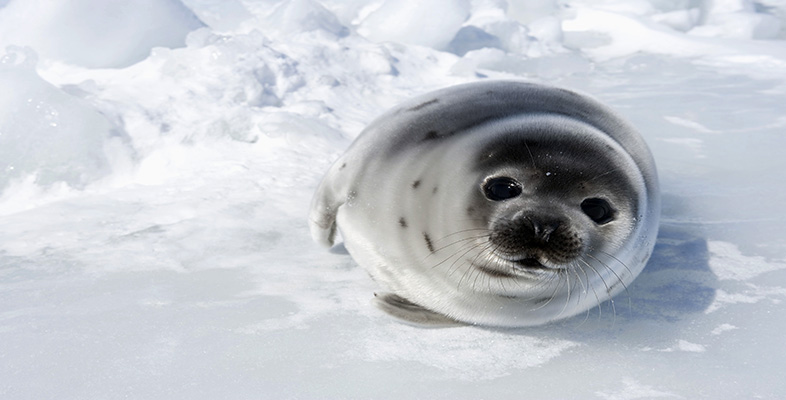5.2.1 Blood pigments
The solubility of oxygen (and of many other gases) in water increases with decreasing temperature: at 0° C, seawater holds 1.6 times as much oxygen when saturated as at 20° C. This fact, and continual disturbance by frequent storms, mean that the surface waters of polar oceans are very well oxygenated. A family of 17 species of nototheniid fish, the Channichthyidae, have no erythrocytes, no haemoglobin and almost no myoglobin at all stages of the life cycle (Section 1.5).
SAQ 34
What would such fish look like?
Answer
Unless the skin is pigmented, they would be almost colourless. Collagenous tissues usually scatter light evenly, thus appearing dull white, like mammalian fascia or tendon.
SAQ 35
For what tissue is being coloured essential to its function?
Answer
Visual pigments called opsins absorb light in the retina, making the back of the eye appear black. Fish adapted to function in dim light have relative large eyes. Sea-ice transmits little sunlight, and daylength at high latitudes is often very short (see Figure 1). Many fish in the Southern Ocean around Antarctica (Figure 23) have large eyes in which the dense, dark retinal pigments stand out against the pale bodies, making them conspicuous. Pigment cells in the skin provide camouflage for many species. Trematomus bernacchii (Figure 23c) is mottled brown, black and pink when it rests on rocks in shallow water, but its pigment cells contract when it is deep water, making the skin uniformly pale. Its common name, emerald rockcod, refers to several green spots on its broad, flexible pectoral fins. Pleuragramma antarcticum (Figure 23a) is called the silver fish because its fine scales reflect light, camouflaging its outline as it moves.
The most thoroughly studied species, the icefish (Chaenocephalus aceratus, Figure 23e), is almost transparent because the proteins in its skin and muscles are sufficiently ordered to enable light to pass through them with minimal scattering.
SAQ 36
How could the absence of erythrocytes improve blood flow?
Answer
The viscosity of most fluids, including water, increases with decreasing temperature, so the heart must pump harder to maintain the circulation of the blood. Blood cells, many of which are quite large relative to the diameter of the vessels through which they pass, make a major contribution to the viscosity, so the elimination of erythrocytes would make the blood much less viscous and hence reduce the work of pumping.
As well as being large (up to 1m long), icefish are active predators that swim in the surface waters and use oxygen at about the same rate as red-blooded antarctic fish such as Pleuragramma or Notothenia (see Figures 23a and b). Icefish blood contains solutes and a few white blood cells, so it is a yellowish, watery fluid similar to mammalian lymph. Large volumes of it flow in wide capillaries propelled by a heart that pumps out three to four times as much blood as that of a red-blooded fish of similar size and habits. The bulbus arteriosus on the anterior side of the heart is greatly expanded and is the only muscular tissue to contain any myoglobin. Measurements on the uptake and circulation of oxygen in captive icefish suggest that, as well as the gills, the thin, scaleless skin is important as a site of gas exchange, with up to 8% of the oxygen absorbed through the tail skin alone. At low temperatures, the blood of icefish circulates faster and takes up nearly as much oxygen from the water as red blood, although transfer of oxygen to tissues is less efficient. However, in even slightly warmer water, these advantages disappear and icefish suffocate.
SAQ 37
What other aspect of energy metabolism is likely to be different in icefish?
Answer
Anaerobic metabolism. Without myoglobin, their muscles are unable to store oxygen so the fish quickly become anoxic during very fast swimming or in deoxygenated water. They tire quickly after a brief burst of swimming and cannot tolerate the build up of more than a very little lactic acid in the muscles and, of course, they do not survive in warmer, less oxygenated water.
